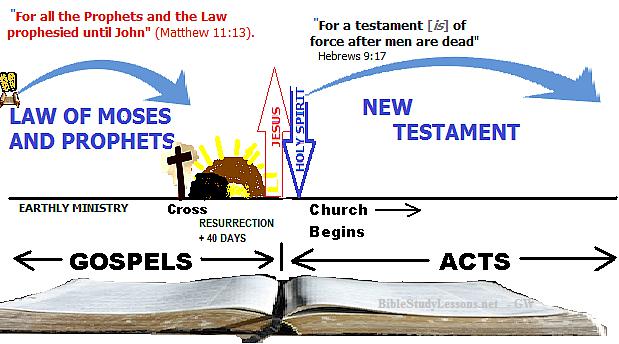'Prooftexting (sometimes "proof-texting" or "proof texting") is the practice of using isolated quotations from a document to establish a proposition. ...also called decontextualised 'i
decontextualising
and proof-texting
When preachers use Luke 13:3 for the plan of salvation under the New Testament (Covenant) of Jesus Christ, they are "decontextualizing." This passage was not meant to be so used.
I have heard good sermons, on the subject of abuse and misuse of Holy Scriptures, spoiled by the preacher when he extends the invitation of Jesus Christ. How many times have you heard the following?
"I tell you, Nay: but, except ye repent, ye shall all likewise perish" (Luke 13:3). To quote Jesus' statement as if it applied after the cross is error and misleading.
Jesus preached, "Repent: for the kingdom of heaven is at hand" (Matthew 4:17) just as John the Baptist did (Matthew 3:2). Jesus' earthly ministry was to the "house of Israel." He called on Israel to repent in preparation for His coming kingdom. "But he [Jesus] answered and said, I am not sent but unto the lost sheep of the house of Israel" (Matthew 15:24). Jesus' statements before the cross did not necessarily apply universally (Matthew 28:18-20). The context qualifies His teaching.
 An example is when Jesus helped the lepers, "And when he saw
[them], he said unto them, Go shew yourselves unto the priests"
(Luke 17:14). This was a specific command to Jews. given before the
cross and the validation of the New Covenant. The priesthood would
shortly be done away with and would not be applicable to Christians.
An example is when Jesus helped the lepers, "And when he saw
[them], he said unto them, Go shew yourselves unto the priests"
(Luke 17:14). This was a specific command to Jews. given before the
cross and the validation of the New Covenant. The priesthood would
shortly be done away with and would not be applicable to Christians.
The command to repent given by Peter on the day of Pentecost (Acts 2:38) is not the same as the repentance mentioned in Luke 13:3. It's not the repentance preached by Paul for all (Acts 17:30). This failure to handle aright the Word (2 Timothy 2:15) has led to man's doctrinal requirements of repentance before believing in Christ (Mark 1:15).
How important is this? Years after the cross, in Ephesus, Paul found some disciples that had been baptized unto John's baptism. "Then said Paul, John verily baptized with the baptism of repentance, saying unto the people, that they should believe on him which should come after him, that is, on Christ Jesus. When they heard [this], they were baptized in the name of the Lord Jesus" (from context of Acts 19:1-7). Their repentance had been equivalent to the repentance preached by the disciples of Christ before the cross (John 4:1-3). But that repentance was unto God and before belief in Christ. The "repentance" commanded in the gospel preached in Acts 2:38 is to be obeyed after belief in Christ with baptism following in the "name of the Father, the Son, and the Holy Spirit." (Note: The "name of the Lord Jesus" metaphorically includes the Father and the Holy Spirit; e.g., we drink the cup in the Lord's Supper; metaphorically, the cup represents its contents, the fruit of the vine.)
Jesus added a command to the Ten Commandments for the rich young ruler to "sell what he had and give to the poor" (Matthew 19:21). This is taken out of context if one says this applies to all Christians today. This would be so, even though the principle of covetousness is condemned in the New Covenant (Colossians 3:5).
Jesus said to the thief on the cross, "And Jesus said unto him, Verily I say unto thee, To day shalt thou be with me in paradise" (Luke 23:43). This promise was to the thief before Jesus died on the cross and does not apply to anyone else. To say that one can be saved like the thief on the cross is to decontextualise the passage. When Jesus heals and says "Take up thy bed, and walk; go and sin no more" (e.g., John 5:14) this is to the Jew before the cross. Jesus says to the adulteress, "Neither do I condemn thee: go, and sin no more" (John 8:11). This was before the cross and these souls were still under the Law of Moses.
"Proof-texting ignores the context of the passage or chapter in which the particular verse is located, as well as other passages related to the same topic. It also ignores the literary and historical contexts in favour of a concept that sees scripture as a string of vaguely related thoughts, each with inherent truth." ii
LAW AND PROPHETS: A COVENANT NAILED TO CROSS
We must accept as fact that the Covenant of Moses did end with the cross. This includes the fundamental Ten Commandments (Deuteronomy 4:13; 5:1ff; 2 Corinthians 3; 4). "Wherefore then [serveth] the Law? It was added because of transgressions, till the seed should come to whom the promise was made" (Galatains 3:19). "Wherefore the Law was our schoolmaster [to bring us] unto Christ, that we might be justified by faith. But after that faith is come, we are no longer under a schoolmaster" (Galatians 3:24,25). We are not under the Law of Moses. Christ has come. We are under the Faith (Jude 3); the New Covenant (Hebrews 12:24); the Law of Christ (Galatians 6:2).
God's moral laws from the Old Testament are reconfirmed as part of the New Covenant by "His holy apostles and prophets by the Spirit" (Ephesians 3:5; Matthew 18:18; John 16:13). This includes the last six of what was called the Ten Commandments in the Law of Moses (Deuteronomy 4:13). It is important to know that the fourth commandment, which is not a moral law, is not a part of the New Covenant (Colossians 2:14-17).
Dear Reader, are you guilty of teaching or supporting the decontextualising of any of God's sacred Word?
i http://en.wikipedia.org/wiki/Prooftext (accessed 1-27-2014).
ii http://www.makestraightpaths.com/prooftexting.htm (accessed 1-27-2014).
Gaylon West
Throw
Out the Lifeline
